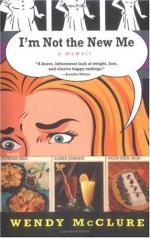hand and pen he will be good but God
knows When.”
These words—simple as they are—will touch the heart of the American people through all the years of our national history. It was “his hand and pen” that wrote many beautiful thoughts. It was his “hand and pen” that wrote those kindest of all words, “With malice towards none, with charity for all.” It was his “hand and pen” that traced the lines of that wonderful Gettysburg speech; and it was his “hand and pen” that wrote the famous proclamation that gave liberty to a race of slaves. It was then God knew he was “good.”
If the remainder of the work
shall be of the same character as
that now printed, it will
be both an instructive and valuable
contribution to American biography.
There is so much in Mr. Medill’s editorial in the Chicago “Tribune,” and he is entitled to speak with such authority, that we print it complete herewith.
Mr. Medill says:
THE NEW LIFE OF ABRAHAM LINCOLN.
It is apparent at the very outset that the new “Life of Abraham Lincoln,” edited by Miss Ida M. Tarbell, the first installment of which appears in McCLURE’S MAGAZINE for the current month, will be one of the most important and interesting contributions yet made to Lincoln literature, as it will contain much matter hitherto unpublished, and will be enriched with a large number of new illustrations. It will be a study of Abraham Lincoln as a man, and thus will naturally commend itself to the people.
The first installment covers about the first twenty-one years of Lincoln’s life, which were spent in Kentucky and Indiana. The story is told very briefly, in simple, easy style, and abounds with reminiscences secured from his contemporaries. It is not only full of new things, but it is so distinct and clear in local color that an interest attaches to it which is not found in other biographies. A large part of this credit must be awarded not alone to the text and to its careful editing, but also to the numerous pictures which upon every page illustrate the context and give the scenes of the story. It is particularly rich in portraits. Among these are portraits from an ambrotype taken at Macomb, Illinois, in 1858, during his debate with Douglas, the dress being the same as that in which Lincoln made his famous canvass for the Senate; a second from a photograph taken at Hannibal, Missouri, in 1858; a third from an ambrotype taken at Urbana, Illinois, in 1857; and a fourth from an ambrotype taken in a linen coat at Beardstown, Illinois.
The picture, however, which will attract the greatest interest is the frontispiece, from a daguerreotype which his son, Robert Lincoln, thinks was taken when his father was about forty years old. In this picture, which bears little resemblance to any other known portraits, he is dressed with scrupulous care. His hair is




